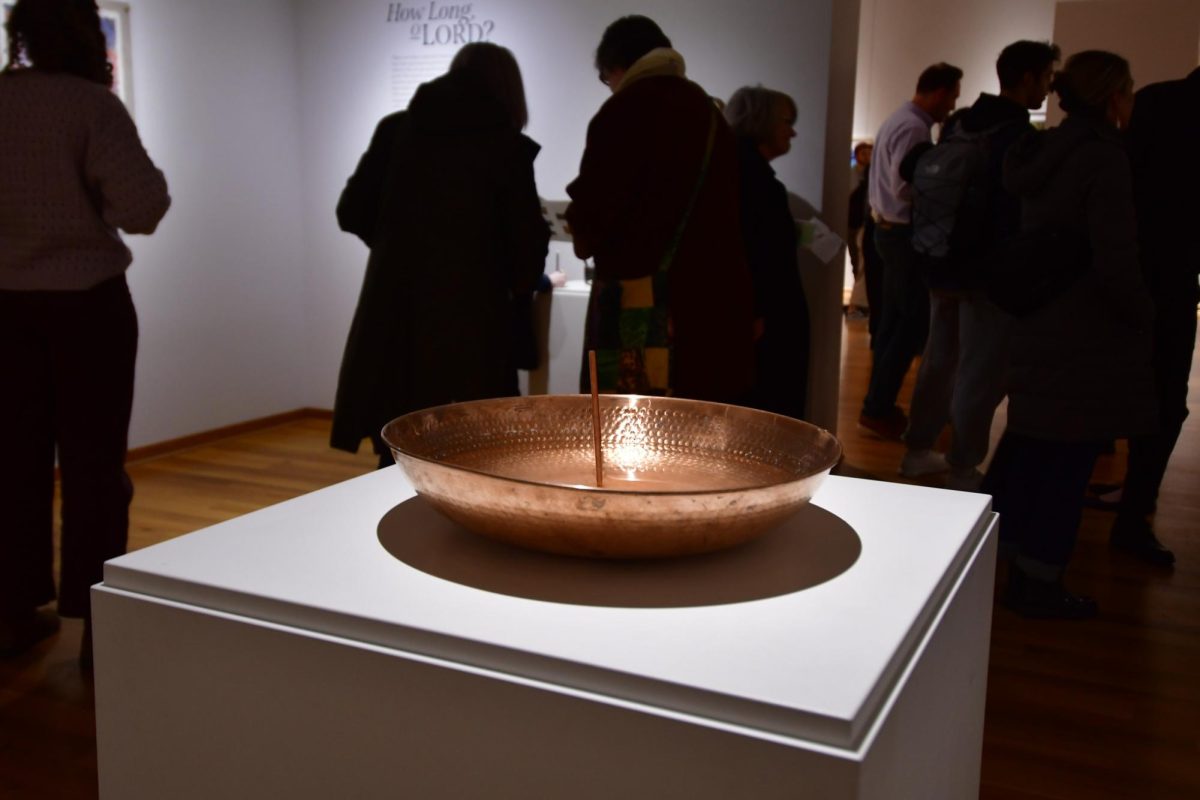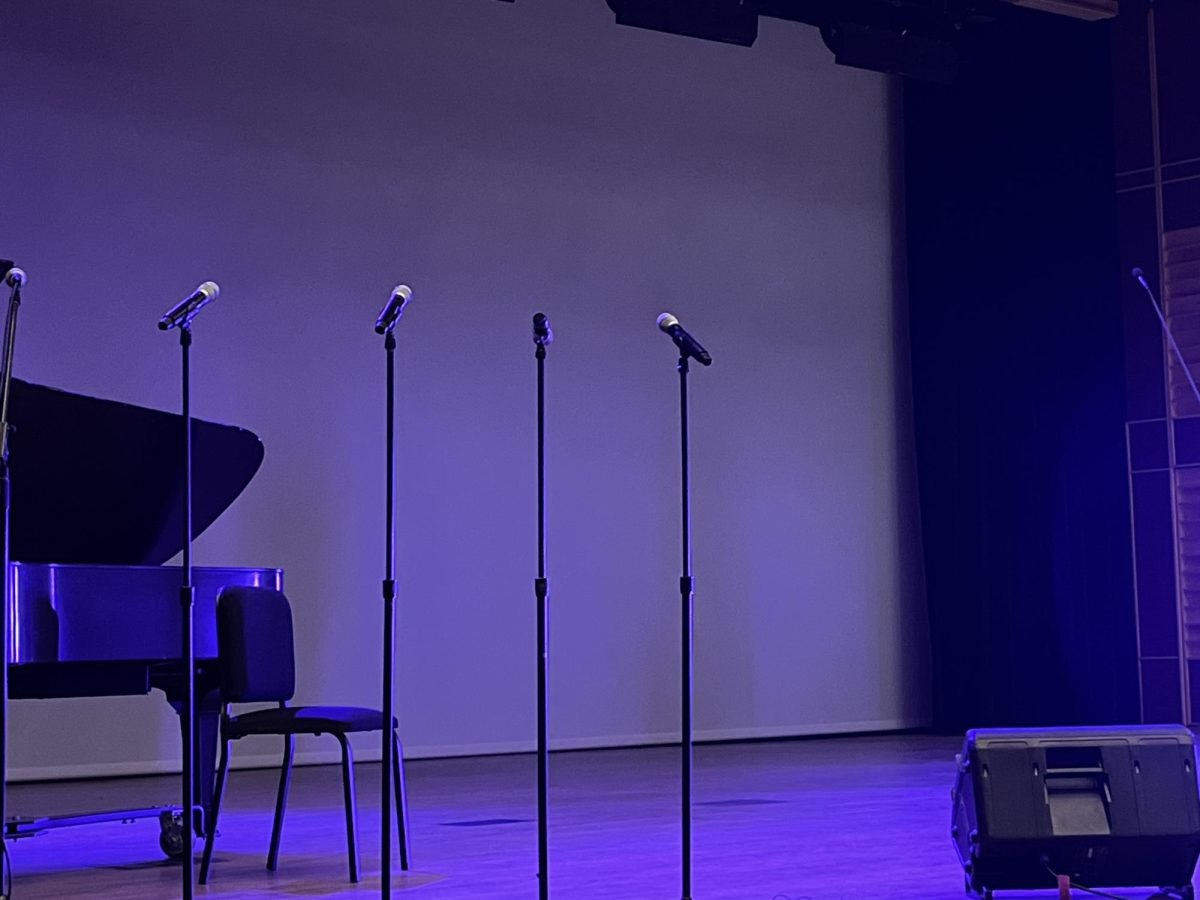When I sat down to write a review of rapper Kendrick Lamar’s newest venture, I already knew I had a tall task ahead of me.
Anyone remotely familiar with the rap/hip-hop scene (and perhaps even some who are not) is aware both of Lamar’s rising stardom and of the excitement, the hype and the expectations surrounding the release of his third full-length album.
The 27-year-old artist first made some waves with his mix tapes “Overly Dedicated” and “Section.80,” but really exploded onto the scene with his first studio album, “good kid, m.A.A.d city,” released in October 2012.
That concept album expertly paired radio-ready beats with lyrics that told stories from the rapper’s teenage years on the streets of his native Compton, and of his persistent struggles amidst the presence of drugs and gang lifestyle.
Lamar’s work was notable for both its critical and commercial successes; the album was certified Platinum, nominated for four Grammys (including “Album of the Year”) and topped many music sites’ year-end lists.
Considering all of this, it is no surprise that fans and critics alike eagerly awaited Kendrick’s 2015 release. What is surprising is the rapper has entirely delivered on the hype.
As it stands, “To Pimp A Butterfly” has already received perfect ratings from sources such as “The Telegraph,” “Entertainment Weekly,” “Spin Magazine,” “New York Daily News” and “The Chicago Tribune,” as well as an average rating of 97/100, according to review aggregator Metacritic.
It’s barely April, and the race for Best Album of 2015 is likely over.
I can’t speak for these various music critics, but when I say “To Pimp a Butterfly” is incomparable, I do not mean that in the sense of employing hyperbole to convey that this album is ‘the sickest, bro!’
Rather, I believe it is incomparable because it is fundamentally different from his (or anyone’s) previous work. It isn’t just a hip-hop album, it is a work of art.
What makes it a work of art? For me, it’s the fact that every single detail of the album requires observation, thought, processing, perhaps even discussion, from the album cover and name to the music and lyrics.
Where “good kid, m.A.A.d city” was deeply personal to Lamar, this album is more explicitly political, many of its aspects pertaining to race and societal problems.
This is the most evident theme throughout “To Pimp a Butterfly,” whose cover depicts a group of young black men in a celebratory pose in front of the White House, standing over the prostrate body of an older white man.
The artist himself has expressed that he was committed to incorporating traditionally African-American musical themes.
Throughout the album, we hear Kendrick’s lyrics set to backing tracks of funk, jazz, soul and, on at least one occasion, gospel.
Many of those lyrics convey Lamar’s introspection on race. The opening track, “Wesley’s Theory,” explains the metaphor of “pimping the butterfly.”
Framed as a back-and-forth between a black artist and corporate America, the song argues that the entertainment industry “pimps” black entertainers: in the first verse, Kendrick adopts the persona of an up-and-coming rapper, declaring, “When I get signed, homie, I’mma act a fool/ Hit the dance floor, strobelights in the room. … Take a few M-16s to the hood/ Pass ‘em all out on the block, what’s good?”
In the response, however, he (from the perspective of Uncle Sam) threatens, “…Get it all, you deserve it, Kendrick/ And when you hit the White House, do you!/ But remember, you ain’t pass economics in school/ And everything you buy, taxes will deny…”
Lamar’s hit single off of the album, “The Blacker The Berry,” is probably the most clear example of his righteous indignation, at one point asserting, “This plot is bigger than me, it’s generational hatred/ It’s genocism, it’s grimy, little justification/ I’m African-American, I’m African/ I’m black as the heart of a f—-n’ Aryan.”
To narrow this to specifically a ‘racial’ album would be a woefully underdeveloped assessment. Many tracks see Lamar at his most personal and vulnerable.
He is in a rare position of fully recognizing his role as one of, if not the most, respected voice in hip-hop today, yet not entirely sure how to handle the fame and success that comes with it.
The infectious singles “King Kunta” and “i” convey the sense of empowerment, self-confidence and love that he needs in his new-found prominence.
Conversely, the counterpart to the latter of those two, “u,” is some of the most heartbreaking rumination on depression and self-loathing I have ever heard. “Institutionalized” and “These Walls” also depict Lamar at his lowest amidst his celebrity status.
Crises of faith sneak into this album as well. Lamar has never shied away from his belief in God, as well as the complicated, ever-changing nature of his faith.
That does not change here, as many songs refer to “Lucy,” a name that symbolizes Lucifer and the devil’s influence.
The track “How Much A Dollar Cost” relays a story of how Lamar refused a homeless man asking for money at a gas stop; later, the rapper realizes to his anger and dismay that God came in the form of that man, and he worries that God will deny him entry to heaven much like he himself denied a small amount of money to the homeless man.
If my review feels a bit like a bunch of semi-processed observations, that’s precisely what it is.
There is just so much content in Kendrick Lamar’s newest release that one or two listens is not nearly enough to comprehend every detail, every ounce of magnificent production.
But on both an individual and a cultural level, it is a deeply relevant album, and the voice of it is perhaps the most qualified of all to speak to its many tensions.
“To Pimp a Butterfly” is a masterpiece not because it’s an easy or even inviting listen, but because it’s a necessary one.





